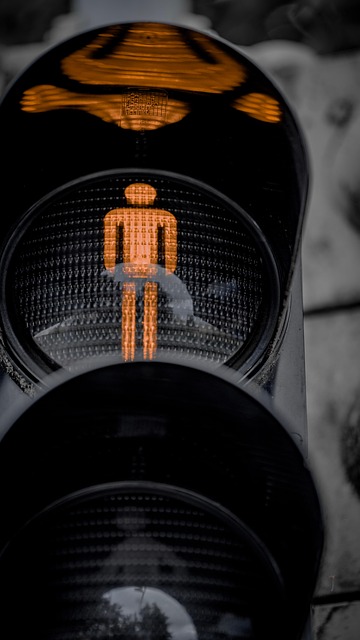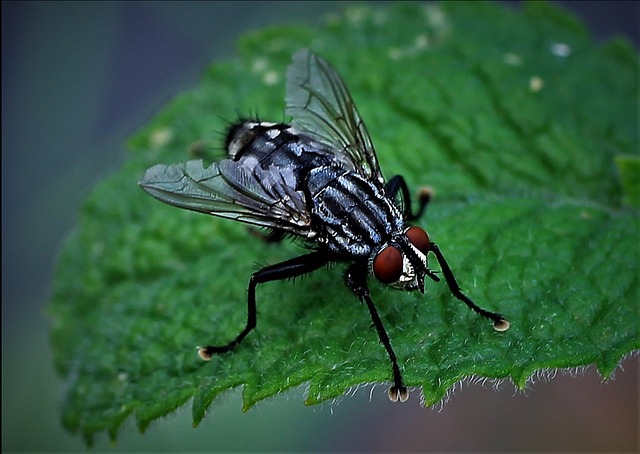Skunks, nocturnal creatures preferring dense vegetation and shrubs in Centennial yards, leave distinctive small paw prints and scent markings. Regular inspections for these tracks and signs of activity help homeowners manage skunk presence humanely. Skilled wildlife control experts trap and relocate skunks safely, addressing infestations while ensuring the animals' well-being.
“Skunks, despite their cute appearance, can become unwelcome visitors to your Centennial home, especially when they set up residence in your yard. Understanding these creatures’ behavior and habitat is key to identifying their presence through track signs. This comprehensive guide will walk you through the art of skunk track identification, helping you recognize when professional relocation services are needed.
Learn about the expert tips and humane methods for relocating skunks from your property, ensuring a safe and effective solution to this potential problem.”
- Understanding Skunk Habitat and Behavior: A Comprehensive Guide for Homeowners
- The Art of Skunk Track Identification: Signs Your Yard Needs Professional Relocation Services
- Relocating Skunks Humanely: Expert Tips for Safe and Effective Removal from Your Centennial Property
Understanding Skunk Habitat and Behavior: A Comprehensive Guide for Homeowners

Skunks are fascinating creatures, known for their distinctive spray but also for their unique habitat preferences. Understanding their behavior and identifying their tracks can help homeowners in Centennial effectively manage and coexist with these wildlife visitors. Skunks are primarily nocturnal and tend to make their homes in areas offering cover and protection, such as dense vegetation, under decks or porches, and even abandoned structures. They leave distinct tracks that can be identified by their small, round paw prints and occasional scent marks.
In the Centennial area, skunks often frequent yards with lush greenery, particularly those with shrubs and trees providing shelter from predators. Homeowners should regularly inspect their properties for signs of skunk activity, such as fresh digging or unusual scent markings. Identifying animal tracks in your yard can be a valuable skill, allowing you to take proactive measures to prevent unwanted skunk visits or manage any existing skunk populations humanely and responsibly.
The Art of Skunk Track Identification: Signs Your Yard Needs Professional Relocation Services

Skunks are elusive creatures, but their presence can be unmistakable if you know what to look for. As skilled diggers and clever navigators, skunks leave distinct tracks that can signal their activity in your Centennial yard. One of the first signs is a network of small holes scattered across the lawn, as they excavate burrows for shelter. These burrows often lead to intricate tunnel systems beneath the ground. Additionally, look for clumped grass or soil near trees or shrubs, indicating where skunks have been foraging for food or creating entry points into their dens.
Identifying these tracks is an essential first step in determining if professional relocation services are needed. If you notice consistent activity with no sign of them leaving (e.g., burrows leading out and away from the property), it’s likely a skunk has made your yard its home, requiring expert intervention to ensure both the safety of the animal and your property.
Relocating Skunks Humanely: Expert Tips for Safe and Effective Removal from Your Centennial Property

When dealing with a skunk infestation in your Centennial property, humane relocation is both an art and a science. Experts in wildlife control understand that skunks play a vital role in the ecosystem, so their removal should be approached carefully to ensure the safety of both the animal and the people involved. The first step is identifying animal tracks in your Centennial yard. Skunks leave distinct marks, often visible as small holes or dug-up areas where they forage for food. These signs can help you pinpoint their activity hotspots.
Once identified, skilled wildlife control specialists employ various techniques to trap skunks effectively. They use specialized traps designed to capture the animal without causing harm. After successful trapping, experts handle the skunk with care, wearing protective gear to prevent any potential spray exposure. The skunk is then gently relocated to a suitable, approved site far from your property, ensuring it has access to adequate food and shelter. This humane approach not only solves the immediate problem but also promotes the well-being of the animals in their natural environment.
Skunk presence in your Centennial yard can be a nuisance, but understanding their habitat and behavior is key to effective relocation. By identifying skunk tracks and signs of activity through expert guidance, you can determine if professional services are needed. Relocating skunks humanely ensures both the safety of these creatures and your property, minimizing potential damage or health risks. Remember, knowledgeable wildlife control experts can provide safe and efficient solutions for managing skunk populations in your Centennial yard, allowing you to enjoy a peaceful outdoor space once again.
